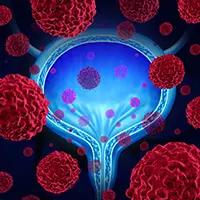Future of Momelotinib in Myelofibrosis Uncertain After Phase III Update
Outcomes were mixed for momelotinib in topline results from 2 phase III myelofibrosis trials announced by Gilead Sciences, the company developing the investigational JAK1/2 inhibitor.
Norbert Bischofberger, PhD

Norbert Bischofberger, PhD
Outcomes were mixed for momelotinib in topline results from 2 phase III myelofibrosis trials announced by Gilead Sciences, the company developing the investigational JAK1/2 inhibitor.
In the phase III SIMPLIFY-1 trial, momelotinib achieved the primary endpoint of noninferiority compared with ruxolitinib (Jakafi) when measuring the percentage of patients with myelofibrosis who had at least a 35% reduction in spleen volume at 24 weeks (SRR24): 26.5% versus 29%, respectively (95% CI, -11.2% to 5.6%; P = .011).
However, noninferiority for momelotinib was not demonstrated for the important secondary endpoint of response rate in total symptom score (TSS) at week 24. The TSS endpoint was specifically defined as the percentage of patients reaching at least a 50% reduction in their symptoms, as evaluated by the modified Myeloproliferative Neoplasm Symptom Assessment Form Total Symptom Score diary.
Three other secondary endpoints were met, all of which were related to anemia. There was greater improvement with momelotinib in the red blood cell (RBC) transfusion rate, through week 24, RBC transfusion independence rate at 24 weeks, and RBC transfusion dependence rate at 24 weeks. Gilead noted that after the TSS endpoint fell short, sequential statistical testing was not conducted for these 3 other secondary endpoints.
The phase III SIMPLIFY-2 trial missed its primary endpoint of noninferiority in SSR24 for momelotinib versus best alternative therapy: 6.7% versus 5.8% (95% CI, -8.9% to 10.2%; P = .90). In the best alternative therapy arm, 88% of patients continued receiving ruxolitinib, with the remainder receiving chemotherapy, interferon, corticosteroids, other treatments, or combination regimens involving these therapies.
Momelotinib met the secondary TSS endpoint in SIMPLIFY-2, as well as 1 of 3 secondary endpoints related to anemia (transfusion independence). Sequential statistical testing for these secondary endpoints was not conducted after momelotinib failed to achieve the primary endpoint.
“The results from both the SIMPLIFY-1 and SIMPLIFY-2 studies indicate that momelotinib provides some treatment benefit, including benefit on anemia-related endpoints,” Norbert Bischofberger, PhD, executive vice president of Research and Development and chief scientific officer at Gilead, said in a statement. “We plan to discuss these results with regulatory authorities to determine the next steps.”
The phase III SIMPLIFY trials evaluated momelotinib in patients with primary myelofibrosis, post-polycythemia vera myelofibrosis, or post-essential thrombocythemia myelofibrosis. The double-blind, active-controlled SIMPLIFY-1 trial randomized 432 patients with myelofibrosis who had not previously received a JAK inhibitor in a 1:1 ratio to receive momelotinib or ruxolitinib for 24 weeks. SIMPLIFY-2 randomized 156 patients with myelofibrosis who had received, but were not refractory to, ruxolitinib in a 2:1 ratio to 24 weeks of best alternative therapy or momelotinib.
In the company’s statement, Gilead announced that the complete results from both SIMPLIFY-1 and SIMPLIFY-2 will be submitted for presentation at future medical meetings.
Momelotinib is one of the emerging treatments researchers were hoping would help transform the field of myelofibrosis. Other investigational agents being explored in ongoing phase II myelofibrosis studies include the antifibrotic immunomodulator PRM-151 (NCT01981850) and the telomerase inhibitor imetelstat (NCT02426086).
Additionally, several agents are being explored in combination with ruxolitinib in myelofibrosis, including danazol, pomalidomide, PEG IFN a2a, 5-AZA, panobinostat, BKM-120, and LDE-225.



